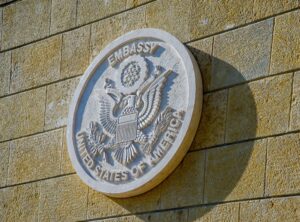A guide has been created which shows which species of tree are best for tackling roadside air pollution.
It’s been created by air pollution experts from the University of Surrey’s Global Centre for Clean Air Research (GCARE) who have today (March 26) published a literature review of research on the effects of trees and hedges on air pollution.
The authors want the paper to help urban planners, landscape architects and garden designers, make informed decisions on which species of vegetation to use and, crucially, what factors to consider when designing a green barrier.
They studied 61 species and found that evergreen plants with small leaves and high foliage density were the best for reducing air pollution.
Plants that pollinate via the wind were found to be ineffective.
In the paper, the team emphasise that the effectiveness of a plant is determined by its environmental context. For example, if it is placed in a street canyon or in an open road environment.
To help concerned citizens with complex decisions, such as which tree is best for a road outside a school in a medium-sized street canyon, the team from Surrey has also developed a plant selection framework.
Professor Prashant Kumar, founding director of GCARE at the University of Surrey, said: ‘We are all waking up to the fact that air pollution and its impact on human health and the health of our planet is the defining issue of our time.
‘Air pollution is responsible for one in every nine deaths each year and this could be intensified by projected population growth.
‘The use of green infrastructure as physical barriers between ourselves and pollutants originating from our roads is one promising way we can protect ourselves from the devastating impact of air pollution.
‘We hope that our detailed guide to vegetation species selection and our contextual advice on how to plant and use green infrastructure is helpful to everyone looking to explore this option for combatting pollution.’













I agree…thanl you for sharing
I agree with Audrey Miller. Although evergreens may help to reduce emissions, they provide much less to the local wildlife in terms of food and nutrients than their deciduous cousins. I can see it now, the archetypal British hedgerow of hawthorn and bramble replaced with conifer and the like regardless of the needs of the broader local environment.
Surely, a better solution would be to re-think how we are responsible for air pollution in the first place and scale back our usage drastically?
Yes we should definitely reduce our pollution creation but it’s not instead of creating pollution reducing forests, its BOTH
How can the need for all hedge and tree planting schemes have at least 25% of Evergreens included in the scheme?